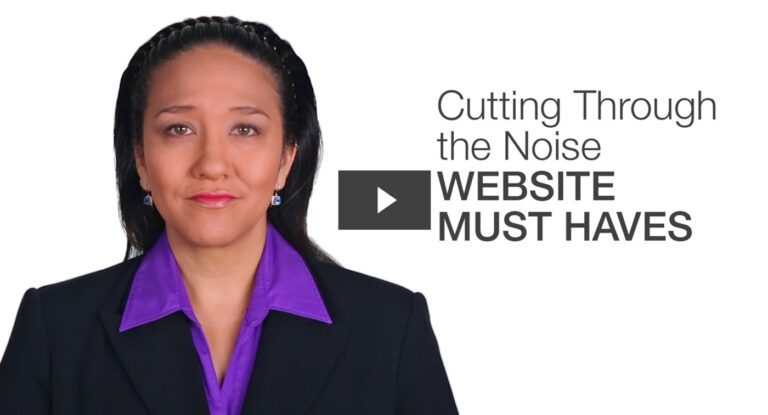In this week’s edition of FAQ Friday, we look at what it takes to create a website that will drive site traffic and engage users. Let’s dive in!
There is no single step-by-step process that will lead to an optimized website. But there are certain measures you can take that will get your website to the next level. By thinking about the following questions, and answers to them, you can put yourself in the right mindset to approach website optimization with clarity and purpose.
Why should I care about my website optimization?
Basic search engine optimization (SEO) is fundamental to compete with the hundreds of other websites vying for the attention of your potential customers. A great SEO strategy will help you position your website properly to be found at the most critical points in the buying process. When people are looking for information or answers to their pain points, it’s imperative that you are one of the first resources they find.
Optimizing a website isn’t just about online presence, it’s about content. The best websites go beyond selling their own company or brand—they promote awareness of common issues and strive to be thought leaders in their industry.
An optimized website is also one that implements responsive design. Responsive design uses layouts, navigation menus, and images which are flexible and adjust to screen size. This is especially important for mobile users, who now account for over half of all search engine queries. Incorporating images and video encourage user engagement and make the website more dynamic. (For a more in-depth look at responsive design, click here).
Is there a way to test my website performance?
KPI (Key Performance Indicators) can be defined as a measurement that is in place to measure the performance of any business activity. In our case, we are focusing on KPI’s that measure the effectiveness of a website. Here are some of the most common, and useful, KPIs:
-
Conversion rate: No surprises here. Conversions are the real reason you have a website in the first place. You want to move people down the sales funnel: from visitor, to lead, to qualified lead, to customer. Great websites achieve this by being accessible (including mobile-friendly), responsive, and full of quality content so that site traffic feels that they’ve received value from the site. Once value is determined, people are much more likely to consider buying your product or service
-
Average Order Value: Also knows as Average Basket Size. This metric tells you the dollar amount of each purchase coming through your site. Let’s say you are enjoying a high conversion rate, but notice that company revenue is falling. This is probably because your closed deals are swaying towards quantity and not quality. AOV provides insight into how large the carts are at checkout, and will lead you to solutions to augment those carts.
-
Touchpoints to purchase: It’s a fact that the longer a user stays on a website, the more likely they are to purchase something from that site. In fact, 94% of visitors made first impressions of a website in under 5 seconds. Measuring how many pages they visit, in addition to which offers they download, will help you understand the browsing habits of your userbase.
-
Retention rate: It costs about 5 times more to acquire a new customer than it does to generate new business from an existing customer. Keeping customers happy should be a major cornerstone of your inbound marketing strategy. In the best-case scenarios, these satisfied customers will become evangelists for your product, sharing positive experiences with their friends and family and promoting you on social media.
What are the main elements I can use to monitor the performance of my website?
Laggy. Slow. Clunky. Static. These are all death knells to the ears of a website designer. You want your site to be in the spotlight, but you want the site to ace its performance when given the opportunity. Here are some common ways to test the performance of a website.
-
Uptime: The total time with which your website is up and running.
-
Page speed: The time it takes to navigate from one section of your site to another. Of course, you want the speed to be as fast as possible. Try not to have too much JavaScript in the head of your code since that requires the JS to load before loading the site. If possible, consider having some of the JS code in the footer. Let’s face it: people love video! Using video is essential to any optimized website. Online video is a contemporary way to convey content that keeps users retained for longer periods of time increasing the perceived value of that page. However, incorporating video might lower the load time of a page if it is not done correctly. Using a streaming video service or online video platform will ensure that your video will load as quickly as the modern video players allow.
-
Geographic performance: Where do most of your customers come from? Where do your most ideal customers come from? Knowing your customer’s location can provide insight on where to target, instead of simply who to target. For example, let’s say you are a video production company in the Bay Area. You have legacy clients from out-of-state, but you notice that most of your blog subscriptions and social media followers are also from the Bay. You can leverage this knowledge by producing targeted ads that reference the Golden Gate Bridge, Warriors basketball, etc. Make your outreach as personal as possible to hit home for your users.
-
Broken links/error messages: Obviously these should be (hopefully) few and far between, but scrutinizing when and where things go wrong is a crucial step to ensuring technical difficulties don’t cause any of your potential sales to fall through.
Do I need an SSL certificate for my website and why?
The world of SSL can be hard to understand, but SSL certification is an absolute must. The last thing you or your business needs is for online attackers to exploit weaknesses in your site’s security and steal data, or worse, directly exploit your online traffic. Secure Sockets Layer is the standard security technology for establishing an encrypted link between a web server and a browser. This link ensures that all data passed between the web server and browsers remain private. Compromising the sensitive and personal data of your site traffic, whether they be first-time visitors or lifelong customers, will critically damage your reputation. Many times, this breach of trust is irreparable. Since 2014, Google has been giving increased ranking to sites that are using SSL. In 2017, if your web site is not SSL compliant, Google will issue a warning in red like this: Not secure
What are the most important elements of SEO for my main website pages?
SEO is a fundamental part of any website optimization strategy. If your website has clever, but arbitrary titles that do not clearly describe its purpose to visitors, you are shooting yourself in the foot, since both individual users as well as search engines will not be able to clearly determine the purpose of your site. Instead of clever titles, pull from a list of keywords that clearly communicate the objectives of your website. This should also align with your business goals- answering questions and solving pain points of your most ideal potential customers.
Choose the keywords that best fit with your company brand, goals, and value proposition. Long-tail keywords, those keywords that contain more words and specific phrases, further distinguish your site’s niche market and will help to attract the most ideal buyers for your product or service. This helps your website visitors not only navigate your website but understand exactly why their search engine brought them to your site in the first place.
How can my company keep up with the constantly changing rules of search engine optimization?
Google is constantly updating its algorithms. These algorithms decide if your website is ranking second or 62nd in the organic Google results. Making sure that your website conforms to the outline of “modern” will help you from any unnecessary penalties. Your website should have content and keywords that give your website viewers actionable tips and best practices, SEO rankings (to the standards of today) that will increase your site’s visitors and boost your social presence.
Since it is well-known that Google is constantly updating its algorithms, you know that you’ll need to stay ahead of the curve. Creating, implementing, and maintaining a lean and adaptive inbound marketing strategy will make sure your site is always as high on the Google rankings as possible. Have consistent meetings with your web development, marketing, and sales teams so you can collaborate on the proper content, and how to publish that content in the most viable way.
Website design is much more than an aesthetic touch-up. The best marketing strategies stem from highly optimized websites, which are the product of deliberate thought and preparation. Staying state-of-the-art means keeping up with online trends which might change quickly over time. But today we have covered some tried-and-true practices which will keep your website approachable, responsive, and accessible from the first page of Google.
Subscribe to our BLOG
Stay in touch & learn how to attract customers, become a thought leader, create effective marketing campaigns, & more.





